This is a photo of a view of Omura bay from Higashisonogi bank. The view is always stunning.
いつもきれいな大村湾。東彼杵から見た景色です。
一般的に 多くの人々は陸に住んでますが 昔 長崎の海に住む人々がいたそうです。 彼らは家船(えふね)と呼ばれる船に住み めったに陸にあがることはなかったそうです。 独自の社会をもち一生を海で暮らしたといいます。
ハウステンボスに遊びに行く時にいつもこの道沿いを通るたび 彼らはここにいたのかなーと思ったりします。
彼らは 漁がとても上手で 決して網や釣り糸は使わず主に鉾で突いて魚をしとめることを 誇りとしていました。時折そうして得た海産物を陸の農産物と交換したそうです。
彼らが陸にあがるのは そうして物々交換する時とお正月 お盆 それととても微笑ましいと思うのですが 子供たちが鞠つき・・・ボール遊びをしたがる時だと本には書かれています。家船はそんなに大きなものではなかったから鞠つきは無理だったのでしょう。
In the past, there used to be people who lived on the boats. I understand people normally live on the land, just like me, but there once were some groups of people who lived their whole life on the boat. It is said that those, should I call them sea-dwellers, people were on the open sea above the Sea of Japan. Apparently those sea-dwellers had existed around Nagasaki and Omura bay too. Whenever I pass by this Higashisonogi area to get to HUIS TEN BOSCH, I ponder over how they were. They were always on their boats carried the whole necessaries and had their own society. They didn't have any house or property on the land, but friends who invited them for the New Year's holidays and Bon vacation. The boat-people were catching marine products for a living and what I took it unique was its principle about how to fish. They never used a net nor a line and used mainly lance to catch any marine products.. Sometimes they landed to exchange their marine stuff for produce with farmers, and to let their kids play with ball. Not to mention but the boats were too small to play with a ball but, you know, kids like to play with it. Aren't they just sweet?
1480年 領地を侵略され唐津あたりに逃れていた当時の大村藩主 大村純伊(すみこれ)は 大村の地を奪還すべく舞い戻ります。その水先案内人を務めたのが この海に住んだ人々でした。 純伊は大村領を取り戻し 海夫に感謝して姓を与えました。領民も良い領主が戻ってきてくれて とても喜び ”大村寿司” をつくってお祝いをしました。
In 1480, they had rescued the Omura's feudal lord, Sumikore Omura, to lead him to come back and he fought back over his land against his enemy. Some years before, Omura land was invaded by the neighbor feudal lord and Sumikore Omura had fled to somewhere outside of Omura. As Omura people loved Sumikore so much, they were grateful for his comeback and cerebrated it with "Omura-sushi". The unique pressed sushi turned out to be the Omura's specialty. Sumikore was grateful to the boat-people and gave them some good second names. The boat-people must have felt honored by that.
今ではその海辺を電車が走ります。
江戸の末期 時代は大きく変わりますが 海夫たちもお金をもうけたり 炭鉱ができたので鉱夫になったり。 でも またしても微笑ましいのは きっと彼らが何より生活を変えたかったのは 子供達の教育のためでした。 陸に上がって学校に通わせたかったのでしょう。
そうして 海に住む人々は姿を消しました。
Nowadays, trains go along the bay. At late the Edo period, as Japan made drastic changes in many ways, those boat-people changed their life-styles too. Some made a fortune and got some property on the land and some quite living on the boat and became a miner. However most of all, I'm so impressed to know they really cared about their kids and wanted them to be educated at school. The boat-people were aware of the necessity of education for kids' future. Again, it's sweet, isn't it?
Now that there is no people who live on the boat.
This is the Chiwata Station.













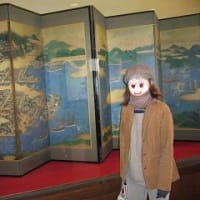
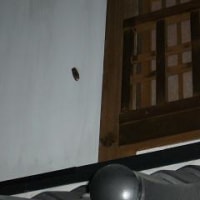
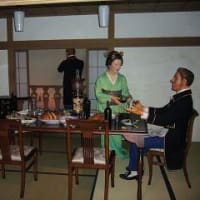
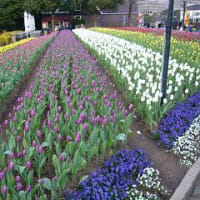
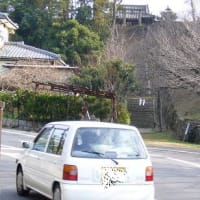
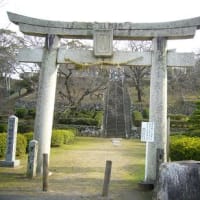
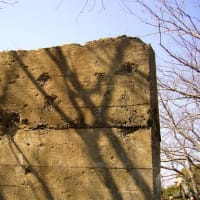
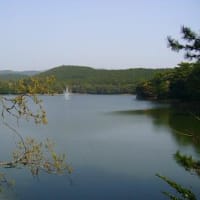
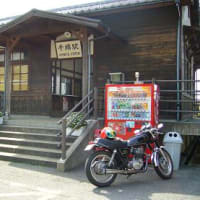
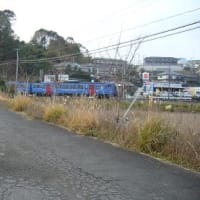
By the way, I was fascinated by the vending machine that I see in the picture. Is it a Coca-cola machine? It looks so different from what we have here in the US.
Ell
That's right, it's a Coca-cola vending machine which has cold drinks and hot ones, even heated canned pottage. There are many vending machines everywhere in Japan. You can see many new products in them anytime. In winter, my favorite is a hot canned cocoa.
Yutanmama